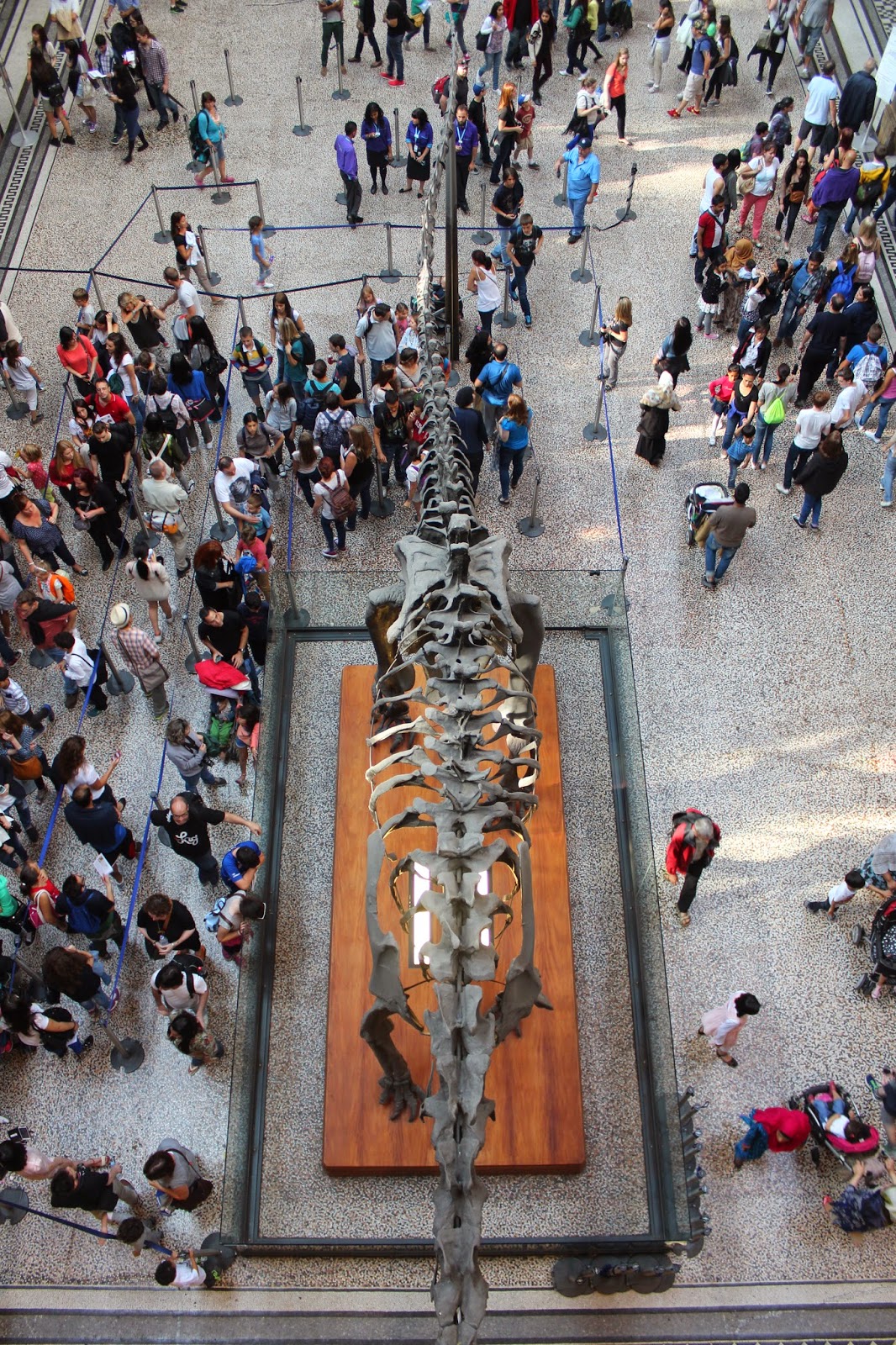The Natural History Museum in South Kensington has been one of my favourite places in London for most of my life. This is mainly because it is home to 'Dippy', a much-loved 110-year old cast of a giant diplodocus who walked the earth about 150 million years ago.
From the age of seven onwards I was totally dinosaur-crazy, memorising hundreds of dino names and facts, watching The Land Before Time umpteen times (Littlefoot!) and keen to be a paleontologist. I still kind of want to be one. It's probably not surprising that 'Dippy' was basically my childhood hero. The Natural History Museum's permanent dinosaur exhibition is absolutely fantastic, with creepy animatronic velociraptors and T-Rexes growling at unsuspecting visitors in the galleries. The lovely Lisa of Not Quite Enough tipped me off about the NHM's 'Dino Snores' event, where dino enthusiasts who have grown up can enjoy a three-course dinner, live comedy and music, a monster movie marathon, an insect-based midnight feast (!), a dinosaur-drawing class, the current exhibitions and, most thrillingly, a night sleeping underneath Dippy himself. I want to go so badly it hurts. Future birthday present to myself...?
On this particular trip, Alex and I decided to visit the current temporary exhibition, Britain: One Million Years of the Human Story. If you know me at all, you'll know that this is genuinely my idea of a perfect date.
Turns out Britain has only been populated by the humble Homo sapiens for the last 25,000 years ago. Hundreds of thousands of years previously, other Homo species crossed a land bridge from Europe to settle here - most notably Homo neanderthalensis, who we know fondly as Neanderthals. The title of the exhibition came from a landmark discovery of a set of Neanderthal footprints. Exposed by chance on a beach at Happisburgh, they're thought to date back at least 950, 000 years.
England wasn't always a green and pleasant land, either. In the past million years it's been warm enough to host jungle cats, woolly mammoths, aurochs, elephants, hippos, rhinoceroses, bears and more. Did you know that as recently as 60, 000 years ago, lions used to prowl through where Trafalgar Square stands today? I could barely wrap my head around that. The UK has also been subjected to numerous harsh Ice Ages, in which ice enveloped the entirety of Britain and northern Europe, forcing humans to flee south.
Most interesting was comparing the genetic makeup of short, stocky, heavy-browed Neanderthals and the much longer-limbed Homo sapiens - and finding out that most humans today (aside from those of pure African descent) possess a small percentage of Neanderthal genes.
One Million Years is a truly brilliant exhibition, absolutely worth a visit if you live in London or are visiting in the next month! It closes on the 28th September and is only £4 for students and £8 for adults. You can book here (absolutely advised, by the way - you have to pay a £1 booking fee but the alternative is queuing for 40 mins or more and getting grumpy and cold in the all too probable wind and rain...)
After the exhibition Alex and I strolled around the rest of the museum, admiring its architectural details and trying to find a haven from the bustling crowds until closing time. The building is German Romanesque, reminiscent of the Renaissance Hotel outside St. Pancras and designed by Alfred Waterhouse in the second half of the nineteenth century, and in my opinion definitely qualifies as one of the most beautiful museums in the world.
While in the upper gallery Alex made several cool gifs of the crowds milling around the Diplodocus. You see? This is why we're going out.
I pushed for us to go to the Vault, at the very end of the rocks room. Not just for die-hard geology enthusiasts, I promise you.
The Vault holds everything shiny and covetable, from supposedly cursed gems to microscopic star dust diamonds. The latter consists of a tiny smudge of powder at the bottom of a tube. Gleaned from a meteorite that fell to earth, these millions of diamonds formed in the dust around dying stars billions of years ago, before our solar system was even born. They're the oldest thing you'll ever see. Puts things in perspective a bit...
I'll leave you with the image of my beloved Dippy's whip-like tail. So much love for the Natural History Museum. And all this talk of dinosaurs and antediluvian objects has put me in the perfect mood to go and see an open-air screening of Jurassic Park at my local park tonight!
























Post a Comment